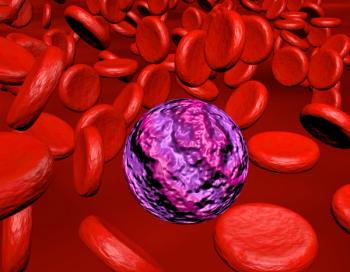
- Oncology Vol 29 No 4_Suppl_1
- Volume 29
- Issue 4_Suppl_1
(S032) Complications of Contralateral Prophylactic Mastectomy With Tissue Expander Reconstruction and Potential Impact on Adjuvant Oncologic Therapy
CPM with TER resulted in a complication in 25% of patients, half of which occurred within 6 months of surgery. However, adjuvant chemotherapy or radiotherapy was delayed by acute complications in only 3% after CPM. Delayed complication rates were higher on the therapeutic side, possibly due to effects of radiotherapy. These data may better inform patients considering bilateral mastectomies with TER.
Rahul D. Tendulkar, MD, Neil M. Woody, MD, Mihir Naik, DO, Chandana A. Reddy, MS, Paul Durand, MD, Adekunle Elegbede, Eliana Duraes, Stephen R. Grobmyer, MD, Joseph P. Crowe, MD, Risal Djohan, MD; Cleveland Clinic
PURPOSE: One concern of contralateral prophylactic mastectomy (CPM) is that a complication may delay adjuvant chemotherapy or radiotherapy for breast cancer. We report acute (< 6 mo), delayed (> 6 mo), and total complication rates in patients undergoing synchronous bilateral mastectomies and tissue expander reconstruction (TER), comparing complications between the ipsilateral (therapeutic) side and the contralateral (prophylactic) side within a perfectly matched cohort.
METHODS: We conducted a retrospective review of breast cancer patients treated at Cleveland Clinic from 2000–2007, and 88 women undergoing synchronous bilateral mastectomies with TER for unilateral invasive breast cancer were identified. Complications were defined as hematoma or seroma requiring reoperation, blood transfusion, capsular contracture (Baker grade III–IV), wound infection requiring intravenous (IV) antibiotics or implant removal, wound dehiscence, implant leak, and extrusion. The timing and laterality of complications were determined to compare the therapeutic and prophylactic sides.
RESULTS: The median age was 43 years (range: 23–63 yr), and the median follow-up was 6.1 years. Overall, 64 patients (73%) were premenopausal, 39 (44%) were lymph node-positive, 18 (20%) received preoperative chemotherapy, 57 (65%) received postoperative chemotherapy, and 24 (28%) received postoperative radiation therapy to the ipsilateral side. Twelve patients (14%) had received prior breast radiotherapy and underwent mastectomy for recurrence. Total complications on the therapeutic side were more common than on the prophylactic side, including wound dehiscence (4% vs 1%; P = .17), capsular contracture (13% vs 5%; P = .06), implant extrusion (10% vs 2%; P = .03), wound infection (20% vs 9%; P = .04), any complication (38% vs 25%; P = .08), and reoperation for a complication (34% vs 21%; P = .048). On the therapeutic side, 23 of 36 (64%) radiated TER patients experienced a complication compared with 10 of 52 (19%) nonirradiated patients (P < .0001). Delayed complications were more common on the therapeutic side than on the prophylactic side (24% vs 13%; P = .04), but acute complication rates were similar (14% vs 13%, respectively; P = .8). Among 11 patients with an acute complication of a CPM, receipt of postoperative chemotherapy or radiotherapy was actually delayed by a complication in 2 of 63 (3%) patients who received adjuvant treatment.
CONCLUSIONS: CPM with TER resulted in a complication in 25% of patients, half of which occurred within 6 months of surgery. However, adjuvant chemotherapy or radiotherapy was delayed by acute complications in only 3% after CPM. Delayed complication rates were higher on the therapeutic side, possibly due to effects of radiotherapy. These data may better inform patients considering bilateral mastectomies with TER.
Proceedings of the 97th Annual Meeting of the American Radium Society-
Articles in this issue
Newsletter
Stay up to date on recent advances in the multidisciplinary approach to cancer.


















































































